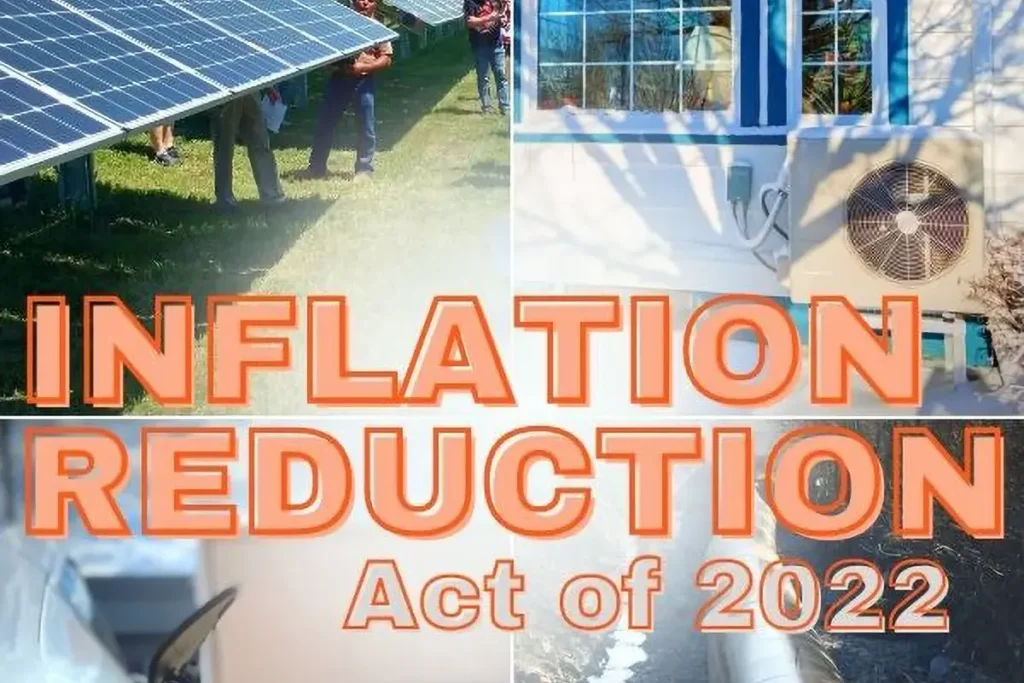A Win for Rural Electric Cooperatives
The Inflation Reduction Act (IRA) makes historic investments to help Rural Electric Cooperatives transition to a clean energy future. As a rural Minnesota-based democracy organization, CURE is a long-time champion of Rural Electric Cooperatives. We have led the Rural Power Coalition to help secure this monumental funding that puts rural communities on solid footing to lead in the clean energy transition. The concept for the policy itself was first articulated in our Rural Electrification 2.0 Report. Now three years later, we are celebrating a hard-fought victory.
Through the IRA, electric co-ops can finally receive direct pay credits for wind, solar, and other renewable energy projects. Previously, co-ops were not eligible because they are not-for-profit entities that do not pay federal income taxes; for-profit utilities have received these clean energy incentives for years. Another vital provision for Rural Electric Co-ops is $9.7 billion in grants and loans for renewable energy projects—the biggest investment in rural electrification in U.S. history. The existing Rural Energy for America Program (REAP) is bolstered with an additional $1.965 billion. This will facilitate even more farm and small business scale renewable energy installations across rural communities.
Currently, Rural Electric Co-ops severely lag in the adoption of renewable energy. Two-thirds of all power distributed by electric co-ops comes from fossil fuels. This hurts rural economies and exacerbates the climate crisis. Co-op member-owners end up paying more for this dirty and expensive electricity every month and these same populations are some of the people most impacted by climate change. Just as the Rural Electrification Act helped rural communities fully participate in the 20th century economy, the IRA will connect rural residents with 21st century clean energy economic opportunities.
Looking forward, the real challenge is just beginning. Co-op member-owners in Minnesota and across the country must fight for a strong implementation that prioritizes clean energy, democracy, and local jobs.
Direct benefits for Minnesotans
The IRA also makes direct investments that improve the everyday lives of Minnesotans. A few areas CURE is most focused on are transportation, energy efficiency, and agriculture.
Electric Vehicle (EV) consumer tax credits
Both new and used EVs are eligible for consumer rebates: $4000 for used EVs and $7500 for new EVs which will help more Minnesotans purchase and drive EVs. Especially for rural Minnesotans who often drive longer distances and larger vehicles, this will increase fuel savings and reduce carbon pollution.
Home energy efficiency rebates + tax credits
Minnesotans across income brackets will be able to make their homes more comfortable, cheaper to heat & cool, and ready to run on clean energy. There is an investment of $9 billion in consumer home energy rebate programs for low & moderate-income people to purchase efficient electric appliances and for energy efficient retrofits. In addition to ten years of consumer tax credits to make homes energy efficient and run on clean energy, including making heat pumps, rooftop solar, electric HVAC, and water heaters more affordable.
Common Sense Agriculture (aka Climate Smart Agriculture)
Proven USDA agriculture programs that benefit farmers, rural communities, and the Minnesota landscape also receive a needed $20 billion in more funding. These include the Environmental Quality Incentives Program (EQIP), Regional Conservation Partnership Program (RCPP), Conservation Stewardship Program (CSP), and Agricultural Conservation Easement Program (ACEP).
Windfall for Carbon Capture
But while we celebrate the hard-fought wins for rural communities, CURE also works with and on behalf of farmers, landowners, and communities that are facing the risk of large-scale carbon capture utilization and storage (CCUS) facilities and infrastructure, including carbon dioxide pipelines. As such we are concerned about the elements within the IRA that will massively incentivize the carbon capture industry with seemingly little care or concern for the people and communities who will be directly impacted.
The IRA includes a significant expansion for the carbon capture tax credit under IRC Section 45Q—now $85 a ton (up from $50) to bury the carbon dioxide underground and $60 a ton (up from $35) for utilization or injection for enhanced oil recovery—and would extend eligibility for an additional seven years to 2033. It would also substantially lower the minimum capture thresholds required for carbon capture projects. While the analysis continues to roll in about what impact this will have on emissions these changes will result in a revenue stream for carbon capture projects which would otherwise be economically unviable—including for coal and gas power plants—and create windfall profits for currently proposed projects, like carbon capture on ethanol facilities and CO2 pipelines, that do not deserve further subsidies. These unrestrained carbon capture incentives also extend a dangerous lifeline to coal and other greenhouse gas emitting sources that we should be phasing out immediately. Meanwhile, the IRA does nothing to address the long pattern of 45Q fraud or provide safeguards or accountability mechanisms for communities that will be in the impact zone of these projects.
Solidarity with Frontline Communities
Our final words are for our partners and peers in the climate and clean energy movements. Environmental and racial justice organizations have been unequivocal in their criticisms of the Inflation Reduction Act, calling out the fact that any gains made for clean energy or emissions reductions are borne from the continued sacrifice of Indigenous, Black, rural, and poor communities. The time to stand with the environmental justice movement is not tomorrow or “next time”—it is today.
The political conditions that have made passing the IRA possible were in large part created by BIPOC (Black, Indigenous, People of Color) and youth-led movements that have revitalized the climate conversation in the U.S.—it would behoove us all to listen to their warnings and their calls. These calls include fighting against the still-forthcoming infrastructure “permitting reforms”—including significant limits placed on the National Environmental Policy Act (NEPA)—that were part of Sen. Manchin’s devil’s bargain and will support the continued expansion of fossil fuels at the worst possible moment. Some clean energy proponents go so far as to support the “streamlining” of the nation’s environmental review and permitting process as necessary for the rapid build-up of clean energy projects citing increasing resistance often from rural communities. But we must find ways to transition to clean energy by means that do not weaken the laws and tools that environmental justice communities have used to protect themselves from polluting and extractive industries. At CURE, we believe that this will require including and respecting impacted communities in decision-making—and even rethinking issues of benefit and ownership—rather than steamrolling them.


